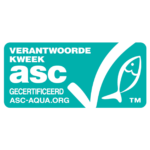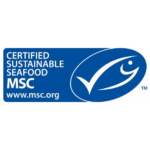King crab
Pacific Ocean, north-east (FAO 67)
Pots and traps
- Jan
- Feb
- Mar
- Apr
- May
- Jun
- Jul
- Aug
- Sep
- Oct
- Nov
- Dec
Lobsters live in saltwater whilst crayfish live in freshwater habitats. Lobsters and crayfish are most often caught using pots or traps. Most lobsters are equipped with ten legs and two scissors as front legs. With these scissors, they are able to grab, cut or crack their food. Did you know lobsters and crayfish, just lie snakes, change their skin because their shell does not grow with their bodies? After changing their shell the animal grows fast and increases in weight.
There are many different lobster species. Most common are the American lobster in the north-western Atlantic ocean, and the European lobster in the north-eastern Atlantic ocean. Lobsters have a relatively slow growth rate and reach sexual maturity at a late age. Another frequently consumed lobster is the Norway lobster. This species is way smaller than the American and European lobster. This species occurs in the north-eastern Atlantic Ocean and parts of the Mediterranean sea.
The king crab, or red king crab, is one of the largest crab species in the world. When including its legs, this species can reach a wing span of over 2 metres. This species can be found in the colder waters surrounding the North Pole. Originally, the king crab is native to the Bering Sea but was introduced in the Barents Sea by Stalin to stimulate the fishery in this area. From there, the species has expanded its distribution range both east- and westwards. In Norway, there is a fishery that specifically targets king crab, as it is regarded as a delicacy.
Pacific Ocean, north-east (FAO 67)
Pots and traps
Atlantic Ocean, northeast (FAO 27)
Deelgebieden: Barents sea
Pots and traps

Fish with the ASC label is farmed in a sustainable manner.

Fish with the MSC label is caught sustainably.
This fish is not being overfished or is being responsibly farmed, with minimal impact on the environment.
This fish is a second choice. There are still some improvements to be made in this fishery or fish farm.
Do not buy this fish. It's being overfished or the way it's farmed or caught has a negative impact on the environment.

There is fish available of this species that is farmed or caught using high welfare standards.

GlobalG.A.P. certified farms are doing a step in the right direction in terms of sustainability. A few species with this label are getting a better score on the VISwijzer.

Organic standards are the strictest when it comes to fish feed. They also require certain measures for animal well-being.